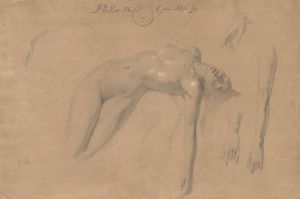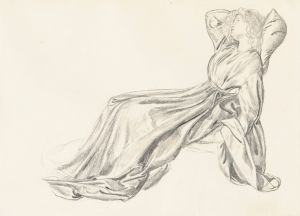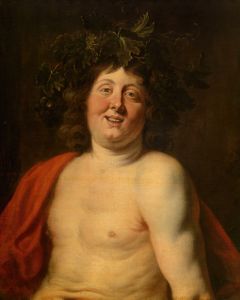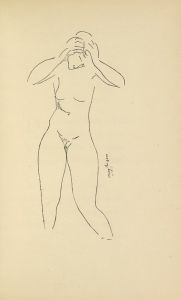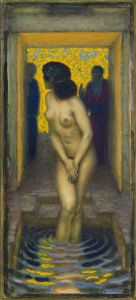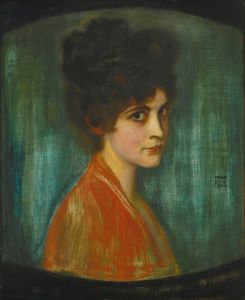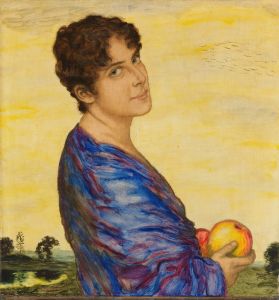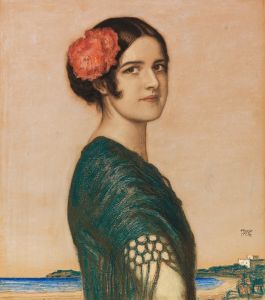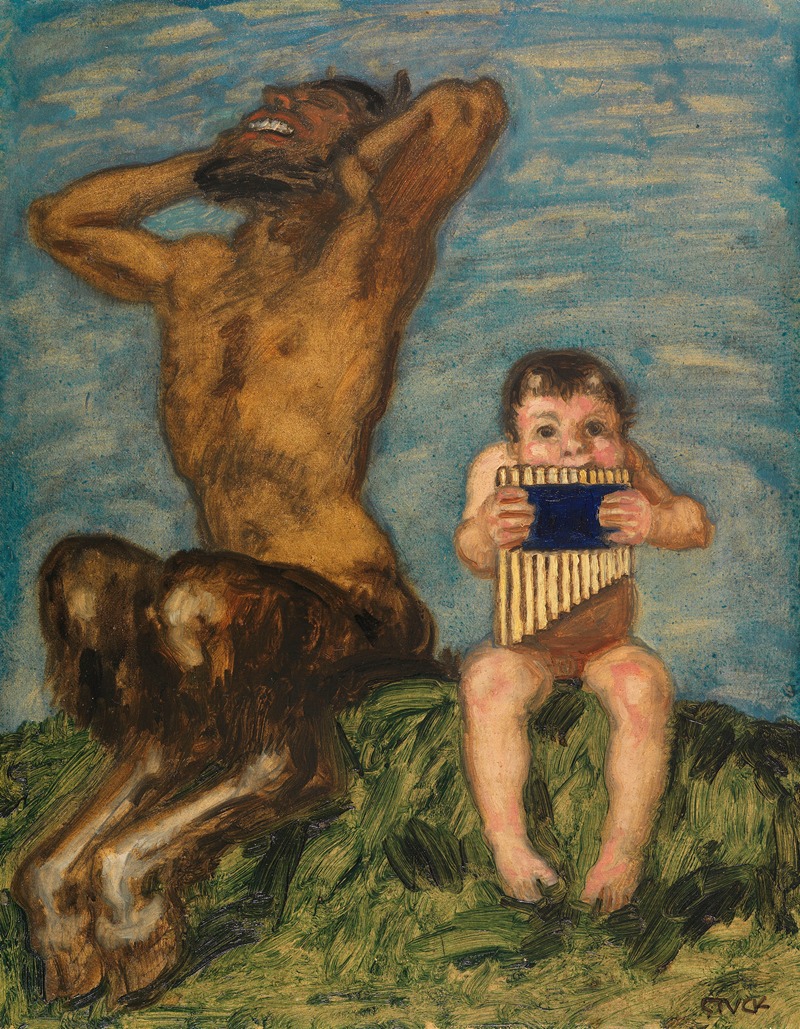
Dissonanz
A hand-painted replica of Franz von Stuck’s masterpiece Dissonanz, meticulously crafted by professional artists to capture the true essence of the original. Each piece is created with museum-quality canvas and rare mineral pigments, carefully painted by experienced artists with delicate brushstrokes and rich, layered colors to perfectly recreate the texture of the original artwork. Unlike machine-printed reproductions, this hand-painted version brings the painting to life, infused with the artist’s emotions and skill in every stroke. Whether for personal collection or home decoration, it instantly elevates the artistic atmosphere of any space.
Franz von Stuck's painting Dissonanz (translated as "Dissonance") is a work by the German Symbolist artist, who was a prominent figure in the Munich Secession movement. Stuck, known for his evocative and often mythologically inspired works, created Dissonanz in 1910. The painting reflects his characteristic style, which blends Symbolism with elements of Art Nouveau, and demonstrates his interest in exploring psychological and emotional themes through allegorical imagery.
The composition of Dissonanz features two central figures: a man and a woman, seated together yet emotionally distant. The man, dressed in dark clothing, appears introspective and withdrawn, while the woman, adorned in a flowing white dress, gazes outward with an expression of melancholy or contemplation. The stark contrast between their postures and expressions suggests a tension or discord, which aligns with the painting's title. The muted color palette and dramatic lighting further emphasize the emotional weight of the scene, creating a somber and introspective atmosphere.
Stuck's use of symbolism in Dissonanz invites interpretation, though the exact meaning of the work remains open to the viewer. The painting may be seen as an exploration of human relationships, emotional estrangement, or the complexities of communication. The title itself, "Dissonance," suggests a lack of harmony, whether in music, emotions, or interpersonal connections.
Franz von Stuck was not only a painter but also a sculptor, architect, and teacher. He played a significant role in the development of modern art in Germany during the late 19th and early 20th centuries. His works often drew on themes from mythology, religion, and the human condition, and he was particularly skilled at conveying mood and atmosphere through his compositions. Dissonanz is a notable example of his ability to capture the subtleties of human emotion and the complexities of the human psyche.
The painting is part of the collection at the Städtische Galerie im Lenbachhaus in Munich, Germany, which houses a significant number of works by Franz von Stuck. The Lenbachhaus is renowned for its collection of art from the Munich Secession and the Blue Rider movement, making it an important institution for the study of early modern art in Germany.
Dissonanz continues to be appreciated for its evocative portrayal of emotional tension and its place within the broader context of Symbolist art. It exemplifies Stuck's mastery of mood and his ability to convey profound themes through his distinctive artistic style.





